RIVER BASIN SCALE
The overall goal of my basin scale research is to investigate the global water cycle and water storage change based on large scale hydrological modeling (e.g. VIC) as well as in-situ and remote sensing hydrological data analyses.
Related publications:
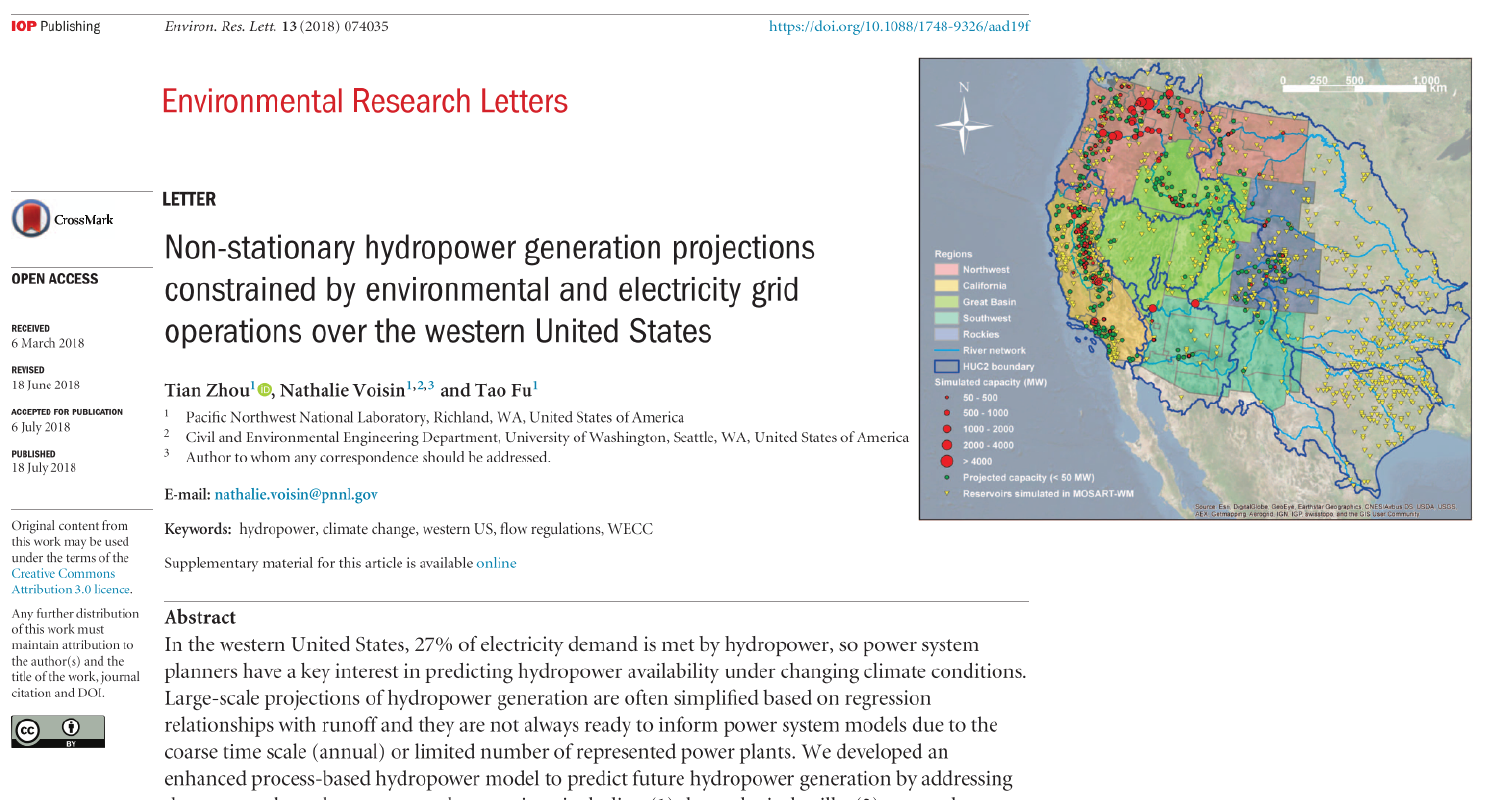 This paper introduces a new process-based hydropower model.
This paper introduces a new process-based hydropower model.
Zhou, T., N. Voisin, and T. Fu 2018 Non-stationary hydropower generation projections constrained by environmental and electricity grid operations over the western United States Environmental Research Letters
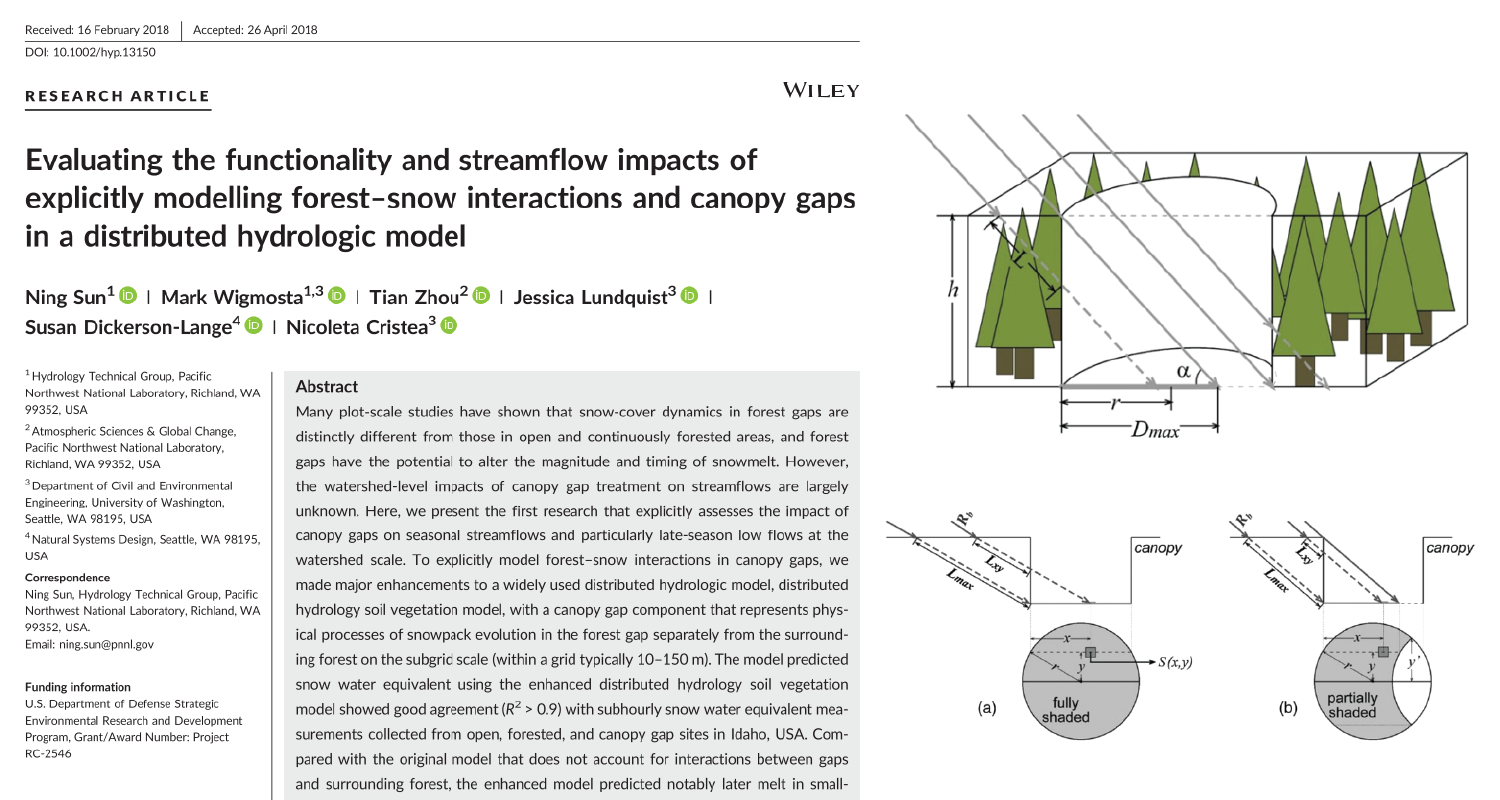 This paper introduces a canopy gap model in DHSVM to better simulate snow processes in the forests.
This paper introduces a canopy gap model in DHSVM to better simulate snow processes in the forests.
Sun, N., M. Wigmosta, T. Zhou, J. Lundquist, S. Dickerson-Lange, N. Cristea 2018 Evaluating the functionality and streamflow impacts of explicitly modelling forest–snow interactions and canopy gaps in a distributed hydrologic model Hydrological Processes
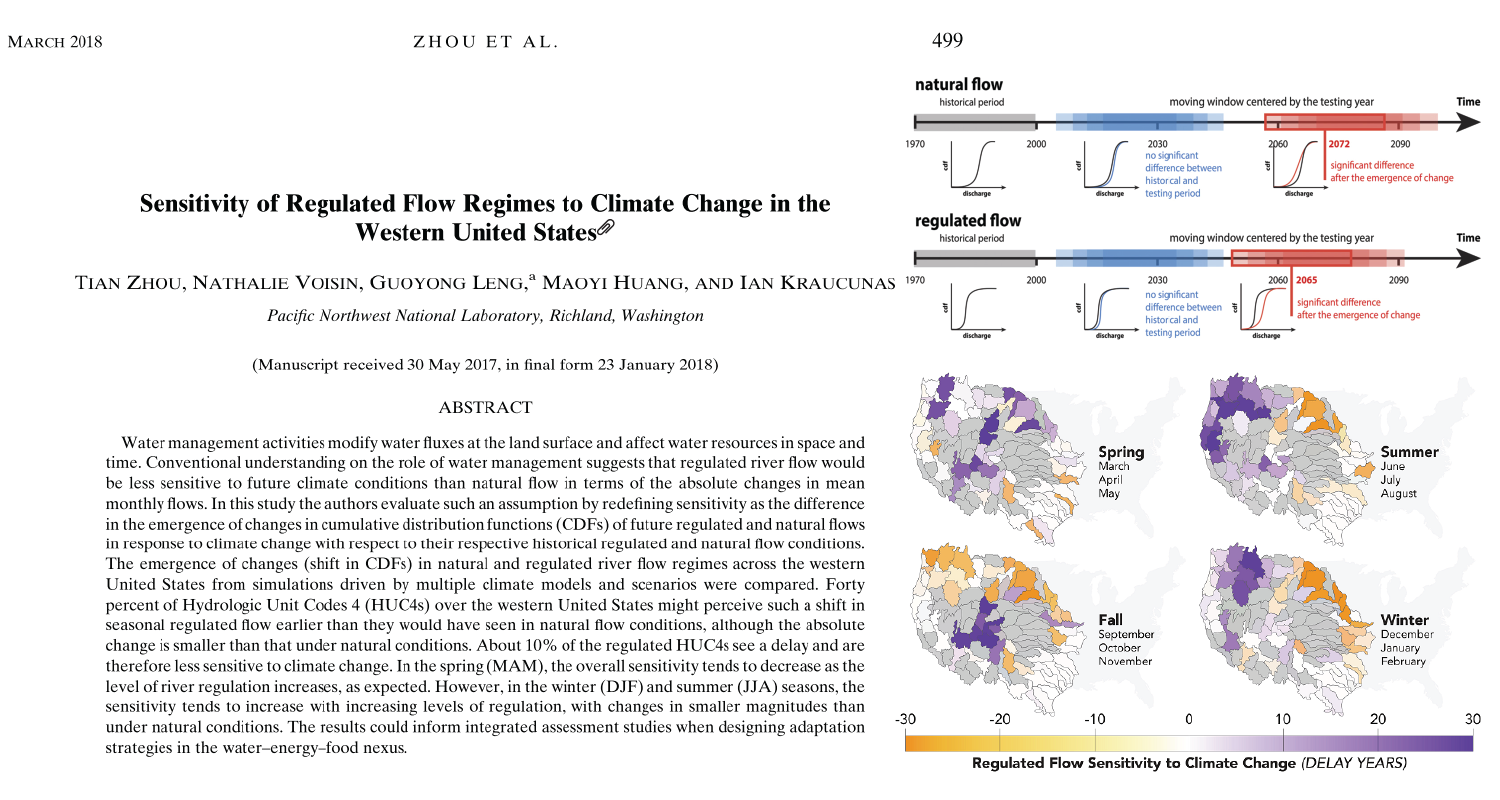 This paper uses Kolmogorov–Smirnov (K-S) test to identify dam regulated flow with higher and lower sensitivity to the future climate change comparing to the natural condition.
This paper uses Kolmogorov–Smirnov (K-S) test to identify dam regulated flow with higher and lower sensitivity to the future climate change comparing to the natural condition.
Zhou, T., N. Voisin, G. Leng, M. Huang, and I. Kraucunas 2018 Sensitivity of regulated flow regime to climate change in the Western United States. Journal of Hydrometeorology
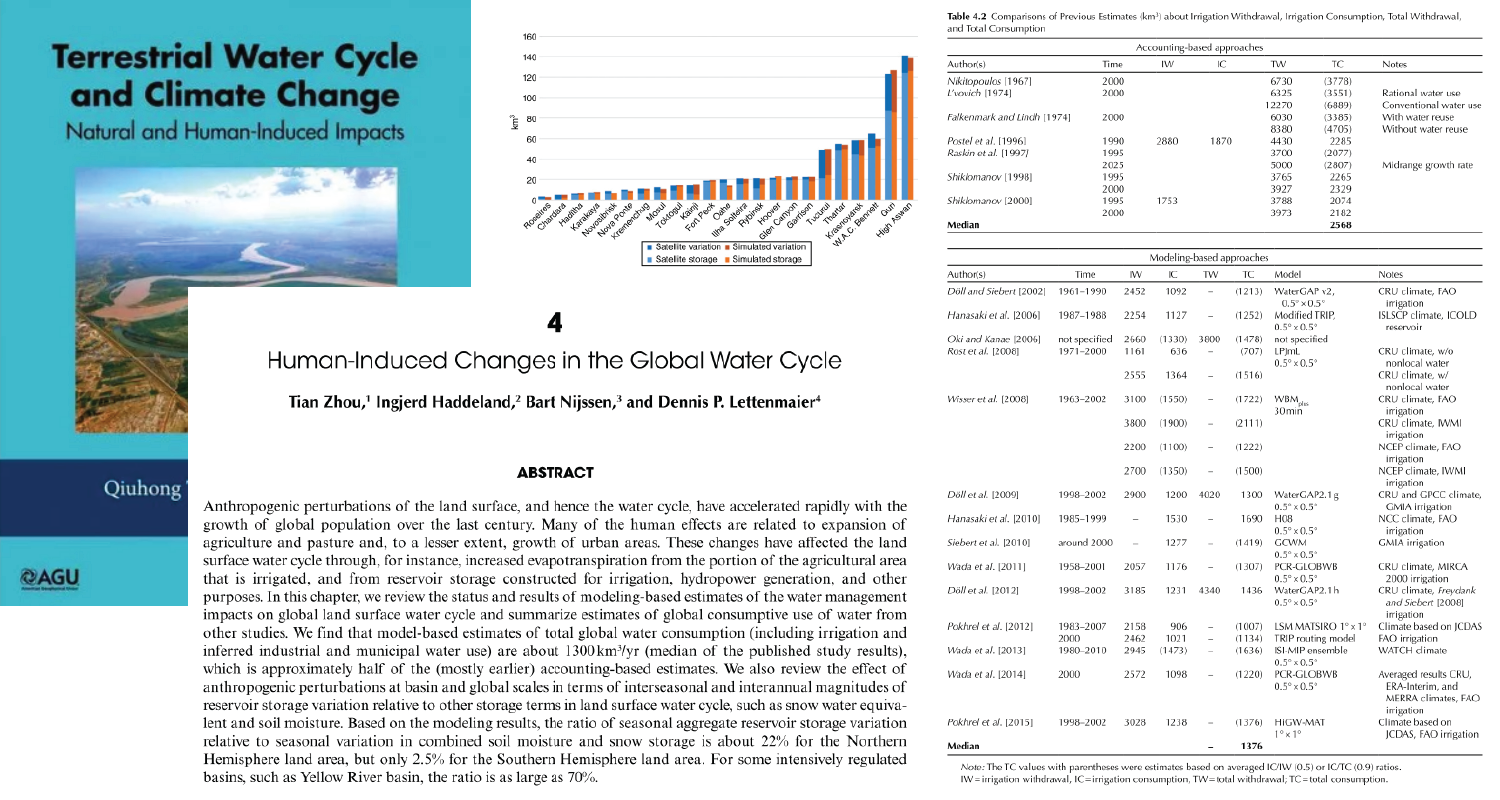 This chapter reviewed the the status and results of modeling‐based estimates of the water management impacts on global land surface water cycle and summarize estimates of global consumptive use of water from other studies.
This chapter reviewed the the status and results of modeling‐based estimates of the water management impacts on global land surface water cycle and summarize estimates of global consumptive use of water from other studies.
Zhou, T., I. Haddeland, B. Nijssen, and D. P. Lettenmaier 2016 Human-Induced Changes in the Global Water Cycle. AGU Monograph Series
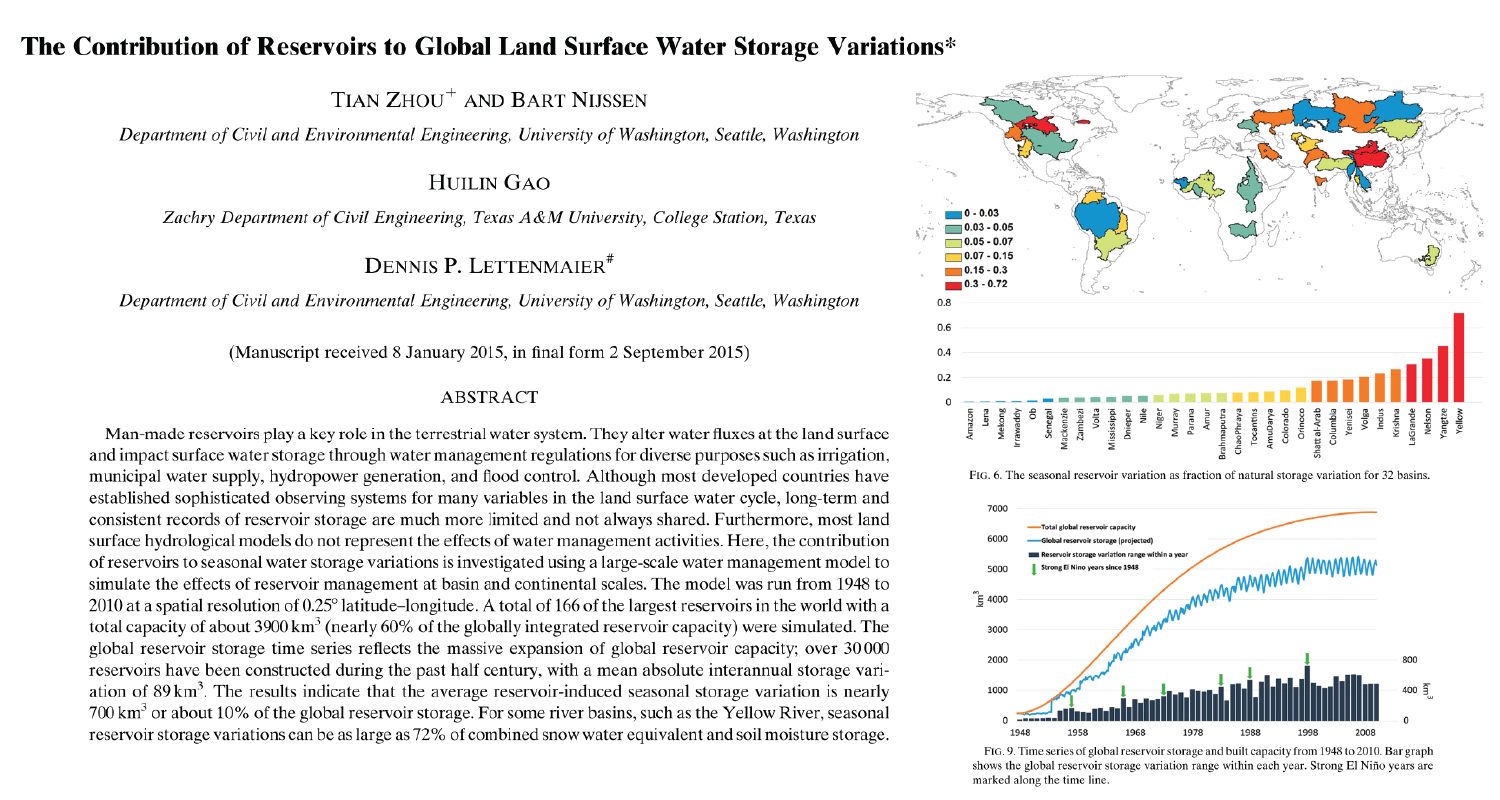 This paper describes a global-scale water management model combining the Variable Infiltration Capacity (VIC) model with a soil moisture deficit based irrigation scheme and a reservoir optimization model.
This paper describes a global-scale water management model combining the Variable Infiltration Capacity (VIC) model with a soil moisture deficit based irrigation scheme and a reservoir optimization model.
Zhou, T., B. Nijssen, H. Gao, and D.P. Lettenmaier 2015 The contribution of reservoirs to global land surface water storage variations. Journal of Hydrometeorology
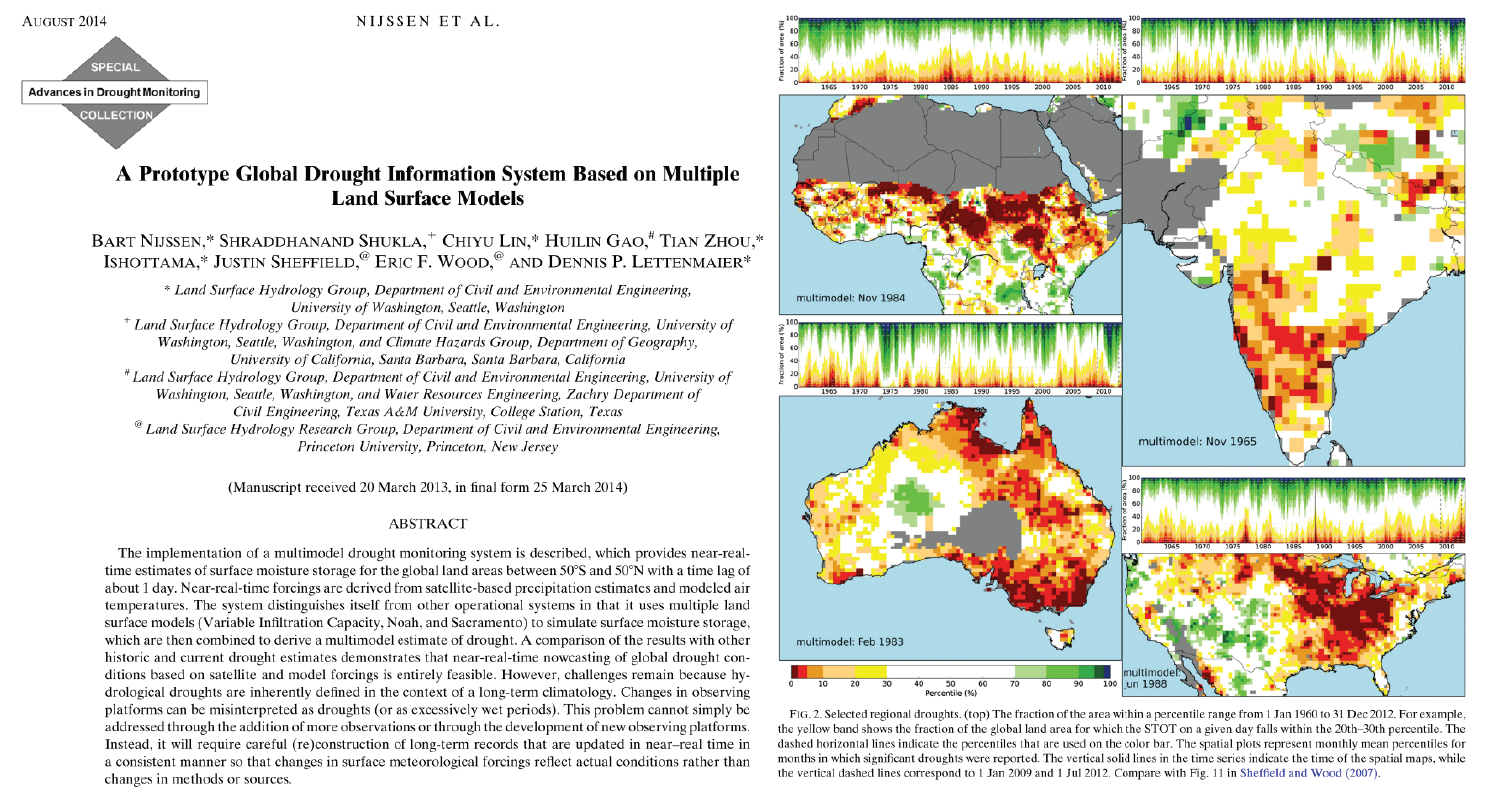 This paper described a multimodel near-real-time (time lag of ~1day) drought monitoring system, which provides estimates of surface moisture storage for the global land areas. As one of the major contributors to this paper, I prepared and processed the near-real-time satellite precipitation data by bias-correcting it to a long-term climatology. Figure shows selected regional droughts from the monitoring system.
This paper described a multimodel near-real-time (time lag of ~1day) drought monitoring system, which provides estimates of surface moisture storage for the global land areas. As one of the major contributors to this paper, I prepared and processed the near-real-time satellite precipitation data by bias-correcting it to a long-term climatology. Figure shows selected regional droughts from the monitoring system.
Nijssen, B., S. Shukla, C. Lin, H. Gao, T. Zhou, J. Sheffield, E. F. Wood, and D. P. Lettenmaier, 2014: A prototype Global Drought Information System based on multiple land surface models. Journal of Hydrometeorology
 This paper employed an innovative statistic approach to test the consistency of a Real-time satellite product (TMPA-RT) with a gauge-adjusted product (TMPA-RP) over the globe.
This paper employed an innovative statistic approach to test the consistency of a Real-time satellite product (TMPA-RT) with a gauge-adjusted product (TMPA-RP) over the globe.
Zhou, T., B. Nijssen, G. J. Huffman, and D. P. Lettenmaier, 2014: Evaluation of real-time satellite precipitation data for global drought monitoring. Journal of Hydrometeorology